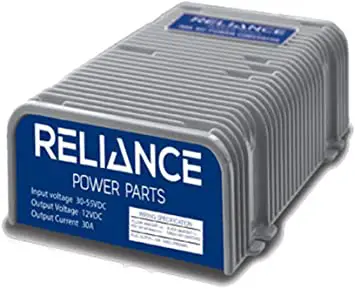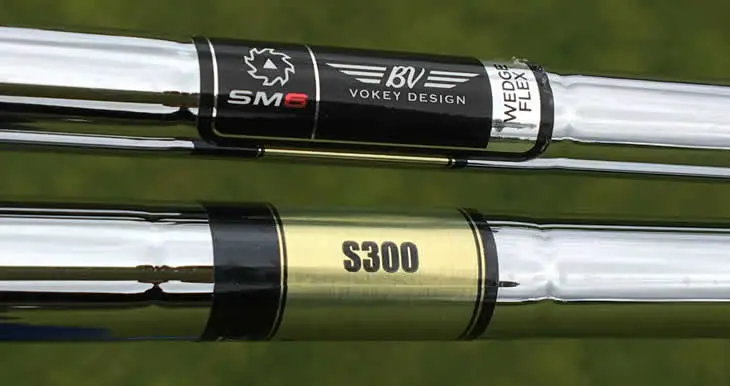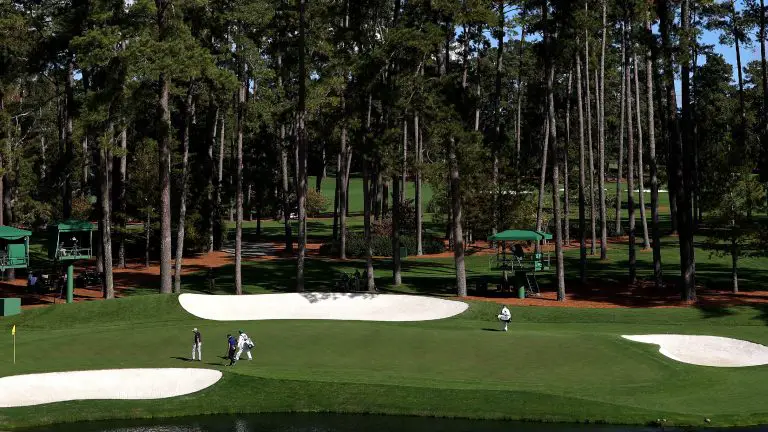How Far Can A Golf Ball Be Hit

Golf, a sport that combines elegance, precision, and strategy, has captivated players and spectators for centuries. One of the most intriguing aspects of the game is the distance a golf ball can travel when struck with skill and power. As golfers strive to unleash the full potential of their swings, they often wonder just how far a golf ball can be hit. In this comprehensive guide, we will embark on a journey to explore the factors that influence golf ball distance, the role of equipment, records and achievements, tips for increasing distance, and the delicate balance between distance and accuracy.
The ability to hit a golf ball long distances has become synonymous with power and prowess in the game. From the massive drives of professional golfers that leave spectators in awe, to the aspirations of everyday golfers seeking to gain an extra yard or two, distance has an undeniable allure.
In this article, we will delve into the factors that affect golf ball distance, including swing speed, clubhead speed, launch angle, ball spin, and course conditions. We will also explore how equipment choices, such as golf ball construction and club design, can impact distance. Additionally, we will examine notable distance records and achievements in both professional and amateur golf.
Furthermore, we will provide practical tips and techniques for increasing distance, encompassing physical conditioning, swing mechanics, and mental strategies. We will also address the delicate balance between distance and accuracy, emphasizing the importance of consistency and precision in achieving optimal performance.
So, whether you’re a novice golfer seeking to understand the basics of distance or an experienced player looking to maximize your potential, join us as we embark on this captivating exploration of how far a golf ball can truly be hit.

Factors Affecting Golf Ball Distance
Several key factors come into play when it comes to how far a golf ball can be hit. Understanding these factors can provide valuable insights into maximizing distance. Let’s take a closer look at each one:
Swing Speed and Power
The speed at which a golfer swings the club is a fundamental factor in determining the distance the ball will travel. Swing speed is influenced by a combination of physical strength, technique, and timing. Golfers with higher swing speeds tend to generate more power and, therefore, hit the ball farther.
Improving swing speed can lead to increased distance off the tee and with other shots. Golfers can work on their swing mechanics, participate in strength and conditioning programs, and engage in exercises that target the muscles used in the golf swing.
Clubhead Speed and Efficiency
Clubhead speed refers to the velocity of the clubhead at impact with the ball. It plays a vital role in determining the initial velocity of the ball, which directly affects distance. Generating higher clubhead speed can result in greater ball speed and longer shots.
Efficiency in the golf swing is also crucial. It involves factors such as the transfer of energy from the body to the club, the quality of the strike on the ball, and the angle of attack. Maximizing efficiency through proper swing mechanics, including a smooth transition and solid contact, can help optimize distance.
Launch Angle and Ball Spin
The launch angle refers to the angle at which the ball takes off from the clubface. It significantly impacts the ball’s trajectory and distance. Golfers need to find the right balance between a high launch angle for maximum carry distance and a low launch angle for optimal roll.
Ball spin also plays a role in distance. Backspin helps the ball stay in the air longer, providing more carry distance. However, excessive spin can lead to a loss of distance. Managing spin through proper equipment, swing technique, and strike quality is essential for maximizing distance.
Course and Weather Conditions
Course and weather conditions can have a significant impact on golf ball distance. Factors such as the firmness of the fairways, the condition of the greens, and the presence of obstacles can influence how far the ball will travel.
Weather conditions, including wind, temperature, and altitude, also come into play. Tailwinds can increase distance, while headwinds can hinder it. Higher temperatures and lower altitudes can also contribute to increased distance due to changes in air density.
Understanding how course and weather conditions affect distance can help golfers make strategic decisions and adjust their game accordingly.
Now that we have explored the factors that influence golf ball distance, let’s delve into the role of equipment in achieving maximum distance.
The Role of Equipment in Distance
While the golfer’s swing and technique are crucial, equipment also plays a significant role in maximizing distance. Let’s examine the key aspects of equipment that impact how far a golf ball can be hit:
Golf Ball Construction and Compression
The construction and compression of the golf ball can affect its performance and distance. Golf balls are designed with various layers, each serving a specific purpose. The core, mantle, and cover materials, along with the ball’s compression, influence its characteristics and playability.
Golf balls with lower compression are generally softer and compress more on impact, creating more ball speed and distance. Higher compression balls, on the other hand, are typically firmer and can offer better control but may sacrifice some distance. Selecting the right golf ball based on personal preferences and swing characteristics can contribute to maximizing distance off the tee and throughout the game.
Club Design and Technology
Advancements in club design and technology have significantly impacted distance capabilities. Manufacturers continuously strive to develop clubs that provide golfers with more power and distance. Key design features that can enhance distance include:
- Clubhead Design: The shape, size, and aerodynamics of the clubhead can influence club speed and ball flight. Modern clubheads are designed for optimal energy transfer and forgiveness, allowing golfers to generate more power and hit the ball farther.
- Shaft Flex, Length, and Material: The flex of the shaft affects the timing and release of energy during the swing. Shaft length also plays a role, as longer shafts can potentially generate higher clubhead speeds. The material composition of the shaft, such as graphite or steel, can also impact the feel and performance of the club.
- Face Technology: Clubfaces with improved technology, such as variable thickness or spring-like effect, can enhance the trampoline effect and increase ball speed, resulting in more distance.
Golfers should consider these factors when selecting clubs and ensure that they are properly fitted to their swing characteristics and preferences. Custom fitting can optimize distance potential by matching clubs to individual needs.
Custom Fitting and Optimization
Custom fitting is a valuable process that tailors golf clubs to a golfer’s unique swing characteristics. By analyzing factors such as swing speed, launch angle, spin rate, and ball flight, club fitters can recommend the most suitable equipment specifications.
During a custom fitting session, various aspects are assessed, including clubhead design, shaft flex and length, grip size, and overall club setup. Optimizing these elements can lead to improved distance, accuracy, and overall performance.
Custom fitting is not limited to professionals or elite players. Golfers of all skill levels can benefit from a fitting session to ensure their equipment is optimized for their game.
Now that we have explored the role of equipment in achieving distance, let’s turn our attention to distance records and notable achievements in the world of golf.
Distance Records and Achievements
The pursuit of distance in golf has led to remarkable achievements and notable records throughout the years. Let’s explore some of the significant distance-related accomplishments:
Longest Drives in Professional Golf
Professional golfers have showcased their power and skill by hitting extraordinary drives that leave spectators in awe. Distance records, both in official tournaments and exhibition events, highlight the immense capabilities of these golfers. Some notable achievements include:
- Longest Drives in PGA Tour: Golfers like Dustin Johnson, Bubba Watson, and John Daly have unleashed incredible drives that have reached distances of over 400 yards.
- World Long Drive Championships: These events specifically focus on the longest drives, where competitors use specialized equipment and techniques to maximize distance. In this high-intensity environment, golfers have achieved astonishing distances exceeding 400 yards.
Factors such as swing speed, technique, course conditions, and weather can contribute to these remarkable feats. It’s worth noting that these extraordinary distances are not common in everyday golf, as professionals possess unique skill sets and physical attributes.
Amateur Long Drive Competitions
Long drive competitions are not limited to professionals. Amateur long drive events provide opportunities for golfers of varying skill levels to showcase their power and compete for distance honors. These competitions often feature multiple divisions based on gender, age, and skill level, allowing participants to compete against golfers with similar abilities.
Amateur long drive events offer a platform for golfers to test their distance capabilities and experience the thrill of hitting powerful drives.
Participants can learn from the techniques and strategies employed by professional long drive competitors and apply them to their own game.
Amateur long drive events typically follow similar rules to professional competitions, with contestants given multiple attempts to hit their longest drive within a designated landing area. These events foster a sense of camaraderie and provide a supportive environment for golfers to push their distance limits.
Participating in amateur long drive competitions can be an exciting way to challenge oneself, meet fellow distance enthusiasts, and gain valuable experience in optimizing power and technique.
Now that we’ve explored distance records and achievements in golf, let’s shift our focus to practical tips and techniques that can help golfers increase their distance off the tee and throughout their game.
Tips and Techniques for Increasing Distance
While not everyone can hit drives that match the record-setting distances of professional golfers, there are practical steps you can take to maximize your own distance potential. Here are some tips and techniques to help you increase your golf ball distance:
Physical Conditioning and Strength Training
Improving your physical fitness and strength can have a significant impact on generating power and distance in your golf swing. Here are a few exercises and training techniques that can help:
- Strength Training: Incorporate exercises that target key muscles used in the golf swing, such as the core, legs, and upper body. Focus on building strength, stability, and flexibility.
- Rotational Exercises: Perform exercises that enhance rotational power, such as medicine ball twists, cable rotations, and seated Russian twists. These exercises simulate the movements involved in the golf swing and promote explosiveness.
- Cardiovascular Conditioning: Engage in aerobic activities, such as running or cycling, to improve overall cardiovascular fitness. Increased endurance can help you maintain consistent swing speed throughout a round of golf.
Remember to consult with a fitness professional or golf instructor to ensure you perform exercises correctly and tailor them to your specific needs.
Technique Adjustments and Swing Mechanics
Fine-tuning your technique and optimizing your swing mechanics can lead to increased distance. Here are a few adjustments to consider:
- Maximize Coil: Focus on creating a powerful coil in your backswing by turning your shoulders away from the target while maintaining a stable lower body. This coil stores energy that can be unleashed on the downswing, increasing clubhead speed and distance.
- Smooth Transition: Practice achieving a smooth transition from the backswing to the downswing. A gradual transfer of energy helps maintain control and generates maximum power.
- Efficient Release: Master the release of the club through impact. A well-timed release with proper wrist hinge and forearm rotation can deliver maximum clubhead speed at the point of contact.
Working with a qualified golf instructor can provide guidance on technique adjustments specific to your swing characteristics and help you optimize your power and distance potential.
Mental Approach and Shot Strategy
The mental aspect of the game is often overlooked but can greatly impact your performance and distance. Consider the following mental strategies:
- Visualize Distance: Before each shot, visualize the desired trajectory and distance. See the ball soaring through the air and landing in your target area. This mental imagery can help you focus on generating power and hitting the ball with confidence.
- Course Management: Develop a strategic approach to each hole. Consider factors such as hazards, wind direction, and hole layout. Position yourself favorably to take advantage of distance opportunities and minimize risks.
- Stay Committed: Trust your swing and commit to your shots. Doubt and hesitation can lead to swing flaws and compromised distance. Maintain a positive mindset and stay confident in your abilities.
Applying these mental strategies can help you harness your physical capabilities and perform at your best, ultimately leading to increased distance and improved overall game performance.
Now that we’ve explored tips for increasing distance, let’s address the delicate balance between distance and accuracy in golf.
Balancing Distance and Accuracy
While hitting the ball far is an enticing goal, it’s important to find the right balance between distance and accuracy. Let’s examine this delicate balance and how it can impact your game:
Understanding the Trade-Off
In golf, there is often a trade-off between distance and accuracy. The longer you hit the ball, the greater the potential for dispersion or the likelihood of the ball straying off-target. As you strive for more distance, there’s a higher risk of errant shots that may end up in hazards or out of bounds.
It’s crucial to recognize your personal playing style, skill level, and the demands of the course. Depending on the circumstances, it may be more beneficial to prioritize accuracy over distance, especially on tight fairways or challenging holes where accuracy is paramount.
The Importance of Consistency and Precision
Consistency and precision play key roles in achieving both distance and accuracy. While hitting the ball far is exciting, it’s equally important to do so consistently, ensuring that the majority of your shots stay within a desired target area.
Working on your swing mechanics, maintaining a repeatable motion, and focusing on strike quality can contribute to more consistent and precise shots. Remember, a controlled and well-executed swing can lead to improved accuracy, allowing you to hit more fairways and greens in regulation.
Course Management and Shot Selection
Strategic course management is vital for optimizing both distance and accuracy. Consider the layout of the course, the positioning of hazards, and the potential risks and rewards of each shot. By adopting a thoughtful approach, you can select shots that maximize distance while minimizing the chances of landing in trouble.
Sometimes, choosing a club that provides more control and accuracy may be the smarter play, even if it sacrifices a few yards in distance. Remember that playing smart and avoiding unnecessary risks can lead to lower scores in the long run.
Now that we’ve discussed the delicate balance between distance and accuracy, let’s conclude our exploration of how far a golf ball can be hit.
Conclusion
The question of how far a golf ball can be hit is multifaceted and influenced by various factors. Understanding the impact of swing speed, clubhead speed, launch angle, ball spin, course conditions, and equipment can provide insights into maximizing distance.
While distance is an exciting aspect of the game, it’s essential to find the right balance between distance and accuracy. Consistency, precision, and strategic shot selection play crucial roles in optimizing both aspects of your game.
By implementing tips such as physical conditioning, technique adjustments, and mental strategies, you can work towards increasing your distance potential. However, always consider the unique demands of each course and make smart decisions that align with your skill level and playing style.
Remember that golf is a game of continuous improvement, and finding the balance between distance and accuracy is an ongoing journey. Embrace the process, enjoy the game, and strive for progress in all aspects of your golf game.
Now, armed with a deeper understanding of how far a golf ball can be hit and the factors influencing distance, it’s time to hit the fairways and put your newfound knowledge into practice. May your shots be long and accurate, and may your enjoyment of the game continue to grow with each swing.






